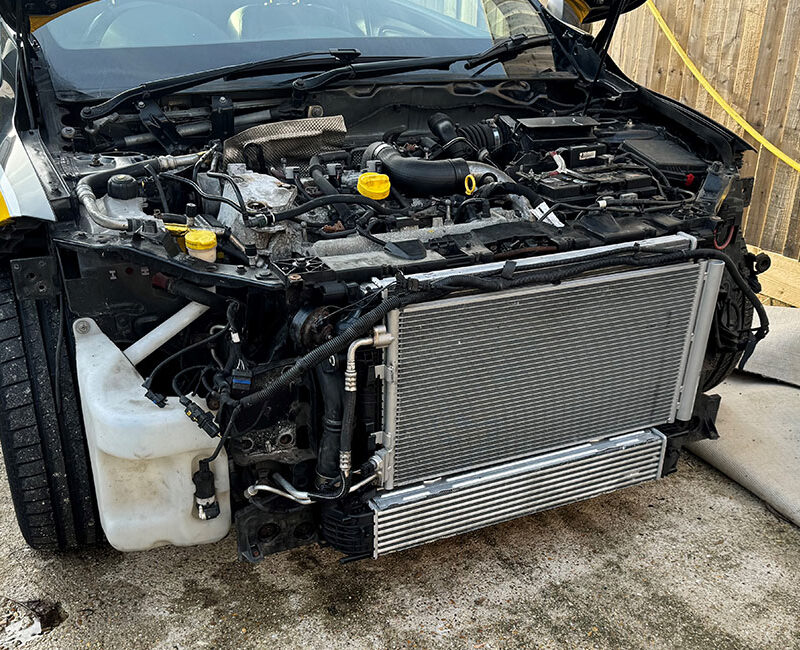Cooling Systems for High-Performance Track Cars
In the high-stress environment of track racing, maintaining optimal engine temperatures is crucial for performance and reliability. High-performance track cars generate a significant amount of heat, and without an effective cooling system, this can lead to overheating, loss of efficiency, and even severe engine damage. This article explores the importance of cooling systems in track cars, detailing the key components and strategies to keep your engine running cool under the pressures of racing.
Understanding the Importance of Efficient Cooling
The cooling system in a track car plays a vital role in managing engine temperatures. During intense driving, the engine operates at high RPMs for extended periods, which generates a lot of heat. Effective cooling is essential to prevent overheating, which can cause reduced performance, engine knock, or catastrophic failure.
Key Components of a Track Car Cooling System
- Radiators: Upgrading to a larger or more efficient radiator can significantly improve cooling capacity. High-performance radiators often have increased surface area and better flow rates.
- Water Pumps: Upgraded water pumps with higher flow rates ensure more efficient circulation of coolant throughout the engine.
- Coolant: High-quality coolant with an appropriate water-to-antifreeze ratio is crucial for optimal heat absorption and corrosion prevention.
- Oil Coolers: Oil coolers are essential for maintaining oil viscosity. They are especially important in turbocharged engines where oil temperatures can soar.
- Intercoolers: For cars with forced induction (turbochargers or superchargers), an efficient intercooler is crucial to cool the air compressed by the turbo/supercharger, enhancing combustion efficiency.
- Thermostats: Performance thermostats that open at lower temperatures can help the cooling system respond faster to rising engine temperatures.
- Hoses and Clamps: High-quality hoses and clamps ensure a leak-free cooling system under the high-pressure conditions of track driving.
Cooling System Strategies for Track Cars
- Airflow Management: Ensure there is adequate airflow through the radiator. This can involve modifying the front bumper or hood for better air intake.
- Ducting: Proper ducting directs air precisely where it’s needed, such as to the radiator, brakes, or oil cooler, for enhanced cooling efficiency.
- Coolant Additives: Certain additives can improve the heat transfer capabilities of your coolant, further aiding in cooling.
- Regular Maintenance: Regularly check and maintain the cooling system. This includes checking for leaks, flushing the system, and replacing the coolant at recommended intervals.
- Monitoring Systems: Install temperature gauges and sensors to keep a close eye on engine and oil temperatures. This allows for timely interventions if temperatures rise too high.
FAQs for Cooling Systems in Track Cars
Q: How often should I upgrade my cooling system for track use? A: It depends on the intensity of your track usage and the performance level of your car. Regular monitoring will inform you if upgrades are necessary.
Q: Can a standard radiator handle track conditions? A: While some standard radiators might cope with light track use, upgrading to a performance radiator is advisable for more intense racing.
Q: Is it necessary to have an oil cooler in a naturally aspirated engine? A: While not as critical as in turbocharged engines, oil coolers can still benefit from high-performance naturally aspirated engines, especially in demanding track conditions.
Q: How do I know if my cooling system is insufficient? A: Frequent overheating, high-temperature readings, and reduced engine performance are indicators that your cooling system may be inadequate.
Q: Does adding more coolant improve cooling? A: Simply adding more coolant won’t improve cooling. It’s more about the efficiency of the entire system – radiator capacity, airflow, pump performance, etc.
In summary, the cooling system is a critical component in high-performance track cars. Effective heat management ensures not only consistent performance but also protects your engine from the damaging effects of excessive heat. Investing in a robust cooling system and regular maintenance will keep your track car performing at its best, even under the most demanding racing conditions. Remember, keeping cool under pressure is not just a metaphor in racing – it’s a literal requirement for your engine’s health and performance.

